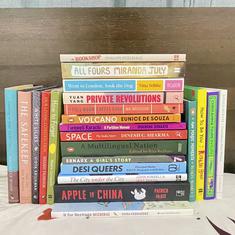Large scale tree planting is being promoted worldwide to mitigate the impacts of climate change and increase forest cover. However, afforestation projects can displace pastoralists and threaten their livelihoods. The disappearance of pastoralists and their animals can also lead to further degradation and environmental damage in these areas.
In a recent paper, researchers from India and the US have shown how tree planting programmes have badly affected the lives of Gaddi pastoralists in the winter grazing areas of the western Himalayas in India over the past five decades.
Their research, carried out in Gaddi populated areas in Kangra district of Himachal Pradesh between 2018 and 2019 and published in the journal Ecology and Society, was sponsored by the NASA Land Cover and Land Use Change program. The area in focus encompassed 64 plantations over 658 hectares.
The tree plantation programme
The paper points out that between 1950 and 2005, India’s government reported afforestation of an area equivalent to 10% of the country’s land area, or just less than half of its total forest cover. Data from the Himachal Pradesh Forest Department indicate a similarly widespread distribution of plantations along the migratory routes of the Gaddis.
What is more, India aims to increase forest cover from the current 21% to 33% under its United Nations climate commitments, without visible thought given to the impacts on rural livelihoods such as pastoralism.
Responding to this, Rajesh Sharma of the Himachal Pradesh forest department said, “In 2015 India pledged in the Paris Agreement to create an additional carbon sink of 2.5 to 3 billion tonnes by increasing its tree cover through afforestation activities on 45 lakh [4.5 million] hectares across the country by 2030.”
“The target was distributed to all the states and union territories as per their geographical area and forest cover,” Sharma said. “Himachal Pradesh is meeting its target of afforestation on 10,000 hectares land every year successfully.”
India seems to be still lagging behind its target. According to Status of Forests in India report released on February 12, 2020, by the Parliamentary Standing Committee on Science and Technology, there had been a considerable decline in the afforestation activities under National Afforestation Programme – from 80,583 hectare in 2013-’14 to 35,986 hectare in 2015-’16. The committee indicated that various afforestation programmes under the Green Indian Mission and National Afforestation Programme were underfunded.
The effect on Gaddis
Gaddis are an agro-pastoral community, listed as a scheduled tribe by the Government of India, who have herded their sheep and goats around the Dhauladhar range for centuries.
“We found that decades of [growing] plantations have decreased the availability of fodder, contributed to increased incidence of invasive species, disrupted migratory routes and changed access to land,” researchers wrote in the paper.
Gaddis move seasonally to find fodder in the lower and middle altitude of Kangra during the winter and the higher altitudes of Kangra, Chamba, and Lahaul and Spiti valleys in the summer.
As well as forests, Gaddis use high-altitude commons, village commons and private land owned by farmers. The forest department and other government officials issue permits for using high-altitude commons. The permission to graze on village commons is obtained from local government bodies, while access to private lands relies on personal relations with individual farmers.

Livelihood shocks
Plantations have made Gaddi livelihoods more vulnerable because the land is enclosed and their access routes blocked. The planting of tree species which animals cannot eat means there is less fodder available. New plantations also provide habitats for invasive shrubs, which decrease livestock health and growth.
Viay Ramprasad, a senior fellow at the Centre for Ecology, Development and Research at Dehradun and co-author of the report, said, “Plantations change species composition for grazing and affect fodder availability. Plantation closures force changes in migratory routes and also alter access dimensions to pasture lands.”
Ratna Devi from Thala village in Kangra described how last year 180 of the 250 goats and sheep of her flock became ill from grazing on an unknown plant in their winter pasture and died at once. She felt badly shaken and helpless. Despite this shock, her family continued herding and invested again in goats and sheep.
Gaddis earn their living by selling milk, meat, and wool. But now they sell young livestock as well.
Musafir Ram, another Gaddi from the area, said, “Young [animals] are more susceptible to harm from ‘outside’ plants so many [people] have resorted to selling almost all young goats and sheep prior to their winter migration.”
People are being forced to rear more goats because they can “trample over” thick plantations while sheep damage their wool when they get entangled in Lantana bushes, leading to decreased incomes.
The wrong trees
Researchers found that most of the varieties of trees planted by the forest department in the last 40 years have been unpalatable to livestock. Until the 1990s, government plantations replaced broad-leaved tree species (such as Ban oak or Acacia catechu) and pastures with pine species, which produce commercially viable resin and timer but are unpalatable to animals.
More recently there has been a greater emphasis on native broad-leaved species, but shrubs, herbs and native meadows have been ignored.
Govind Jeet, a Gaddi, agreed with one observation in the research paper, “We have noticed that palatable species like grasses such as garna and basoti and plants such as peepal and kangu are now almost absent in winter pastures.”
Low survival rate
And after all this, the success rate of new plantations remains quite dismal. In most cases, local villagers do not help maintain these areas. Uddam Singh, a Gaddi resident of Lapiana village in lower Kangra, said, “In the 10-hectare patch near my house in the last 20 years only two trees, a sagban (teak) and a bamboo, remain standing.”
Singh said this failure was because the species chosen were not suitable for the local environment. Gaddis also intentionally grazed their animals on tree seedlings for fodder in protest against the actions of the forest department.
Fences and restricted mobility
To increase the survival rates of newly planted trees, the forest department fenced off areas for five to 15 years.
Pradeep Thakur of the state government’s forest department said, “Around 10,000 hectares [of forest] have been planted in Himachal Pradesh.”
“New plantations have to be closed for at least five years otherwise it will end up as degraded land,” he said. “But area outside the fenced site is left open which Gaddis can access.”
“We grow broad-leaved plants and trees including medicinal and fruit trees to curb the monkey menace,” he added.
Farmer resistance
Gaddis have become more dependent on private lands and village commons. Here they face resistance from cultivators.
In the past farmers welcomed pastoral herders on their fallow grain fields to graze stubble and fertilise the fields with manure, but this has now changed.
“Earlier, goats and sheep used to graze on malkits (private agricultural lands) during the summer,” Thimpu from Chandpur village said. “Now farmers cultivate horticultural crops, they are wary about grazing herds damaging their crop. We have to keep our goats and sheep away from agricultural land or pay farmers in exchange for receiving fodder.”

Give pastoralists a say
Gaddis complain they have been largely left out of decisions around plantations and only consulted in a “token fashion” when decisions are taken, such as for hydropower projects at high altitudes.
Forrest Fleischman of the University of Minnesota and a co-author of the research report, told The Third Pole, “Plantation programmes can harm vulnerable people like Gaddis who need a voice in deciding where plantations will be placed and how they are managed.”
Furthermore, their migratory routes are now increasingly disrupted by growing towns and peri-urban developments, hydroelectric projects, widening of roads and an increase in traffic due to tourism and plantation activities.
Gaddis have changed their migratory routes. They either shorten their migration – some herders in Spedu do not go all the way to Lahaul and Spiti in summer – or shift routes to other areas in neighbouring Mandi district.
Declining pastoralism
Many of the 178,000 Gaddis in Himachal Pradesh have given up their pastoral livelihoods and animals and found alternative income sources, according to the Registrar General of India 2011.
This has four potential consequences, warn the researchers. “First, this can lead to reduced resource extraction or grazing,” they wrote in their paper. “Second, the loss of Gaddi livestock could result in the degradation of ecosystems that are dependent on Gaddi livestock for preventing ingrowth of woody plants by grazing and/or for redistributing nutrients. Third, herders previously defended their grazing rights, in the absence of herders it may be easier for others to claim those lands for mining or hydropower development.”
Trilok Kapoor, a Gaddi and chairman of the Himachal Wool Federation, said, “Due to continuous decrease of pastures and theft of livestock by anti-social elements on their migratory routes, the life of Gaddis has become very difficult.”
“I have urged the state government to support pastoralists, not only for the welfare of the community but for the economy of the state also,” he said. Products such as organic milk and meat also have medicinal value and the manure and wool is a global brand, he said.
Kapoor has been holding camps on their migratory routes, providing vaccinations for livestock and buying sheep wool at good prices.

Shifting to more sedentary livelihoods and diversifying income sources is “not easy,” said Abha Joglekar, report co-author and researcher at Kangra Integrated Sciences and Adaptation Network.
“We found that many Gaddi people have transitioned to non-pastoral livelihoods such as soldiers, teachers, small traders, shopkeepers and even labourers,” she noted. “Some families also practice rainfed agriculture growing maize, rice and legumes by settling in villages near winter pastureland. Those with good political connections land up having good government jobs and setting up own businesses like wool selling, rearing Jersey cows etc.”
Sandeep Mishra, assistant director, Cattle Production in Himachal Pradesh, added, “Since Gaddi people are sturdy and well informed about the hill /forest terrain, some gain employment as trekking guides.”
“Some of these people now run their own homestays for tourists with the support of the state government, while some are able to avail government jobs under job reservation [schemes] extended to them as marginalised scheduled tribe community,” Mishra said.
This article first appeared on The Third Pole.










